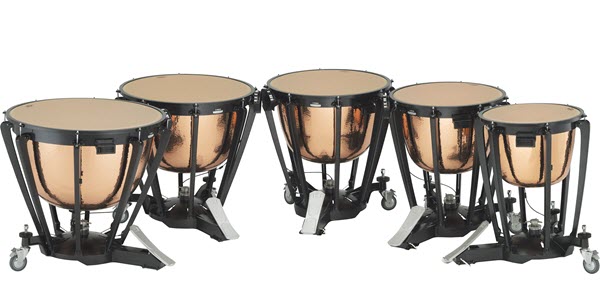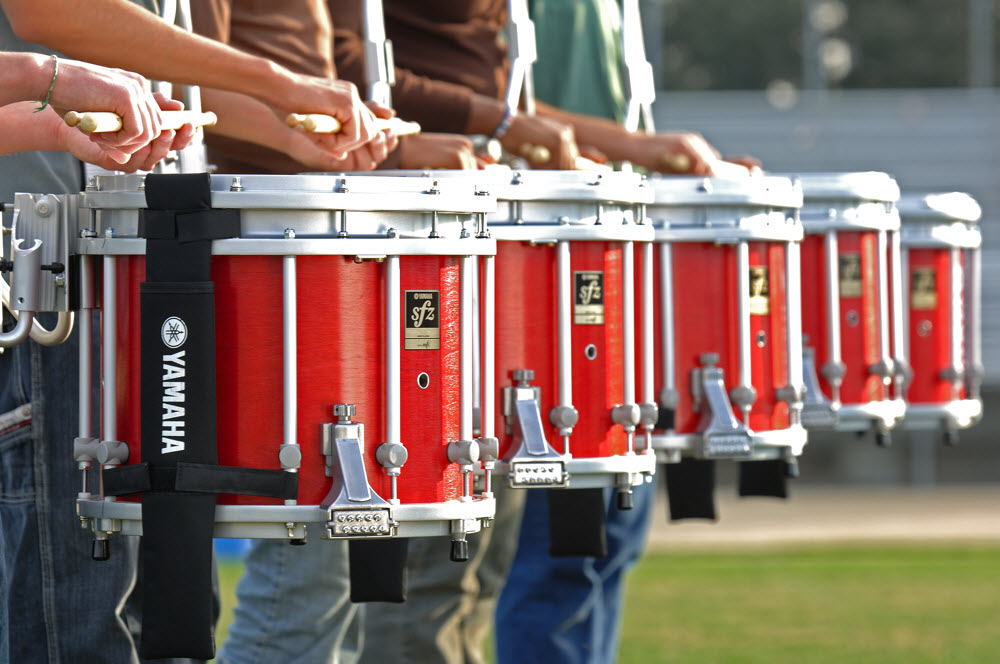Buying New Timpani? Here’s What You Need to Know
Nine important tips for band directors.
The process of purchasing timpani for your music program may seem like a difficult undertaking for many different reasons. For one thing, it’s a major investment. In addition, these large percussion instruments take up a lot of floor space and so storage may be an issue. Moving them can be problematic, there are a lot of moving parts to keep in good repair, and at the end of the day probably only a few students will end up playing them anyway.
So where does one begin? The good news is that with a little knowledge you can easily determine what you require to support the needs of your program. As you begin gathering information, here are a few tips to help make the process as easy as possible:
1. Understand the purchase process. For a middle school or high school, buying a set of four or five timpani may be the largest single purchase the music program will ever make. That’s why it’s particularly important to meet with your principal or fine arts administrator to understand the process. Be clear on who has the final say on the procurement. This is important to ensure that what is purchased is what you are recommending. The last thing you want is for a lower-priced model with undesirable features to be swapped in at the last moment by an administrator just for the sake of saving a few dollars.
2. Know your budget. Timpani are not inexpensive, so do your research. Get a sense of what you can afford and whether you need to fundraise additional money. Money can be saved if you get only what you need and do not overspend in buying beyond the needs of the program.
3. Don’t be afraid to ask for advice. Ask your collegiate band director and percussion friends for the brands they prefer or used in college. Was the company sales representative available when needed? Were the timpani easy to tune? Do the timpani stay in range? Only previous owners/users can answer these questions accurately.
4. Consult with your local music dealer. Local dealers are a great resource, especially if they’ve been in business for a long time. Ask them which timpani manufacturers they like to work with when buying stock for their store. Which instruments hold up over time? Which manufacturers can provide parts without delay? How long does it take to get delivery? In addition, ask the dealer if they will help you unbox the timpani and get them tuned up upon delivery.
5. Choose the correct bowl type. Most timpani are made of copper, while other models are made with aluminum or fiberglass. Copper timpani are suitable for levels at high school and above, while hammered copper bowls are intended for collegiate level and professional use. Aluminum and fiberglass are utilized in portable models designed for beginning band, worship services and community theatre applications.
6. Choose the correct head type. Be sure the heads that come installed on your timpani are not an off brand. A top tier branded timpani head will be much stronger and will last longer in outdoor environments and bad weather. If the timpani are used for both indoor and outdoor applications, plan on replacing the heads at least once a year.
7. Check the pedal operation. Every brand of timpani has a pedal that varies in comfort. Most pedals are either spring-fed or hydraulic. The action of the pedal should be tested for smoothness of operation prior to purchase. A pedal that creaks when moved can be unnerving. Be sure to try the pedal from every brand so you can get a feel for each pedal type.
8. Ensure that the timpani you purchase come with proper casters. Large casters are needed to navigate the terrain to and from the band room, the practice field, and the performance hall, and if you are moving timpani often, durable casters are a necessity. In addition, you want casters that lock and will tilt each timpano towards the player. These kinds of casters keep each drum from moving side-to-side or back-and-forth during play. Adjusting the tilt of each timpano allows the playing angle to be adjusted for the needs of each player.
9. Protect your investment. To keep each timpano in optimum shape for years to come, ensure that your timpani come with head covers and drop covers to protect them from the damage that heat and moisture can cause. (Make sure to place these covers on each timpano after every use.) And remember, timpani should never be used as a table!
For more information, check out these other blog articles:
How to Change Timpani Drum Heads
Caution! Are You Moving Your Timpani Correctly?
A Brief History of Yamaha Timpani
Click here for more information about Yamaha timpani.














